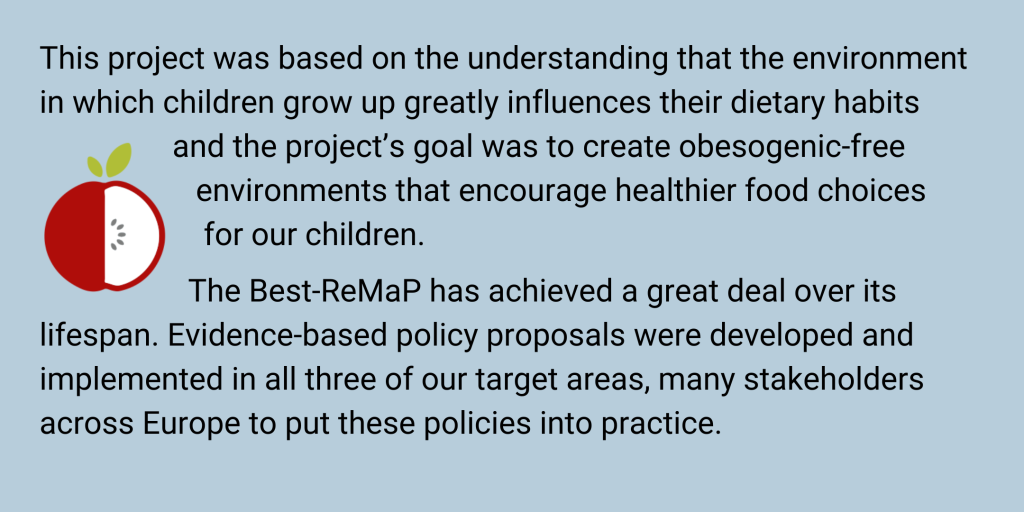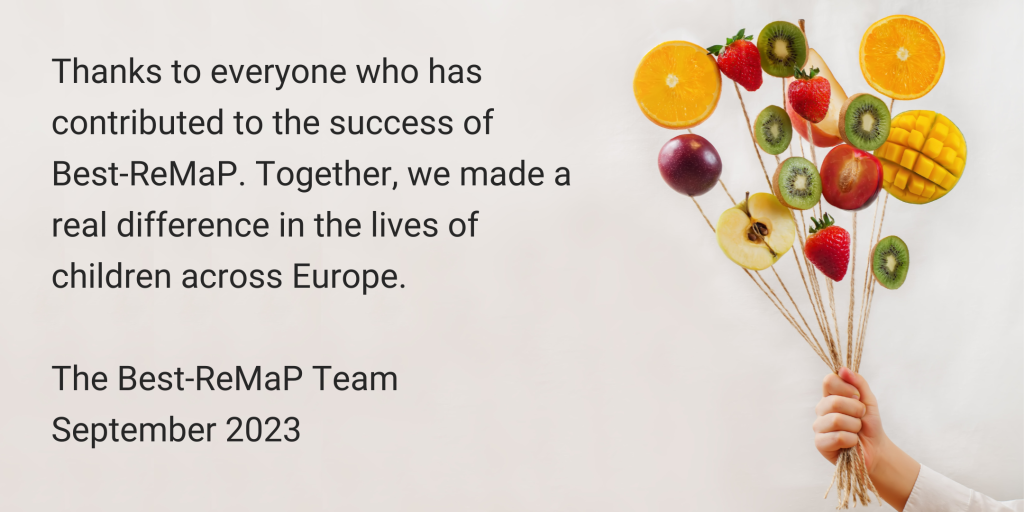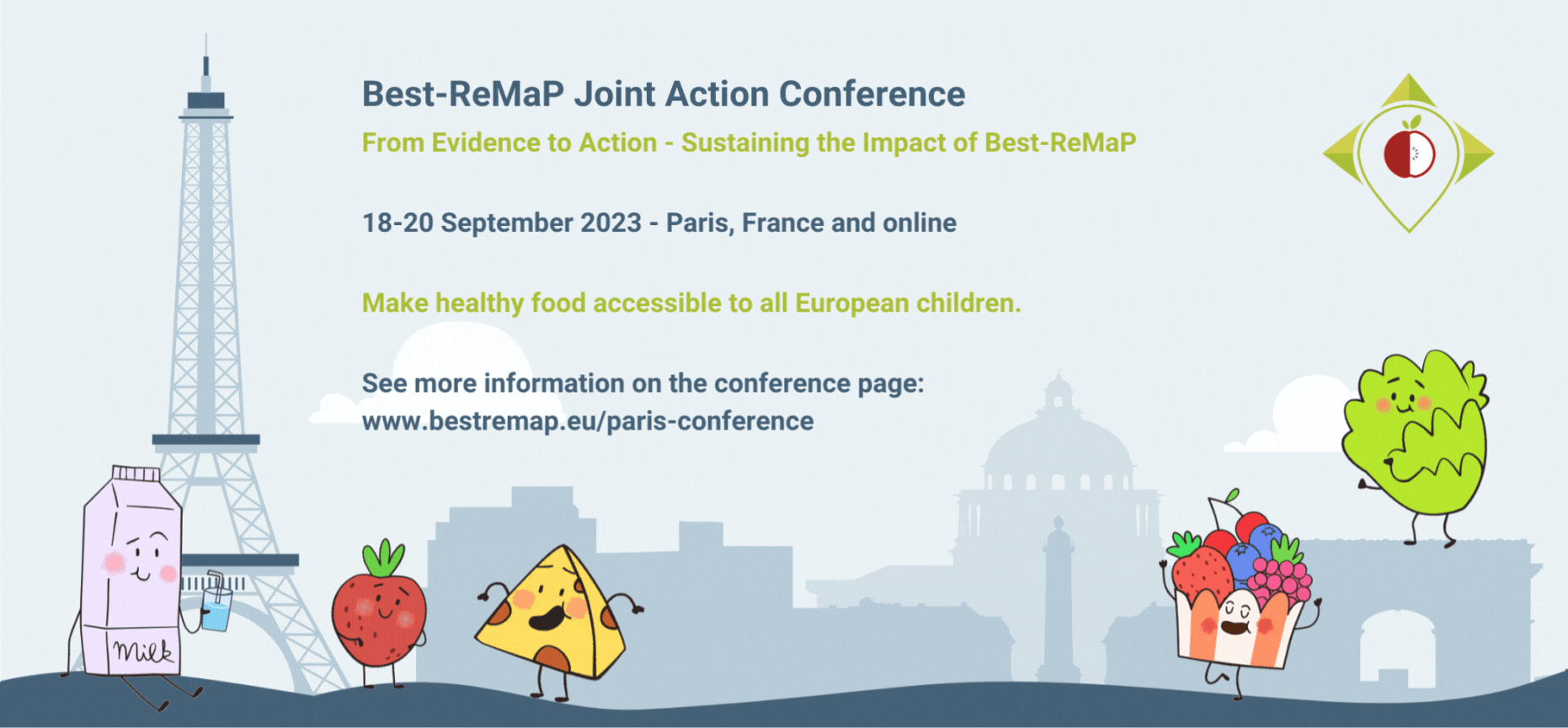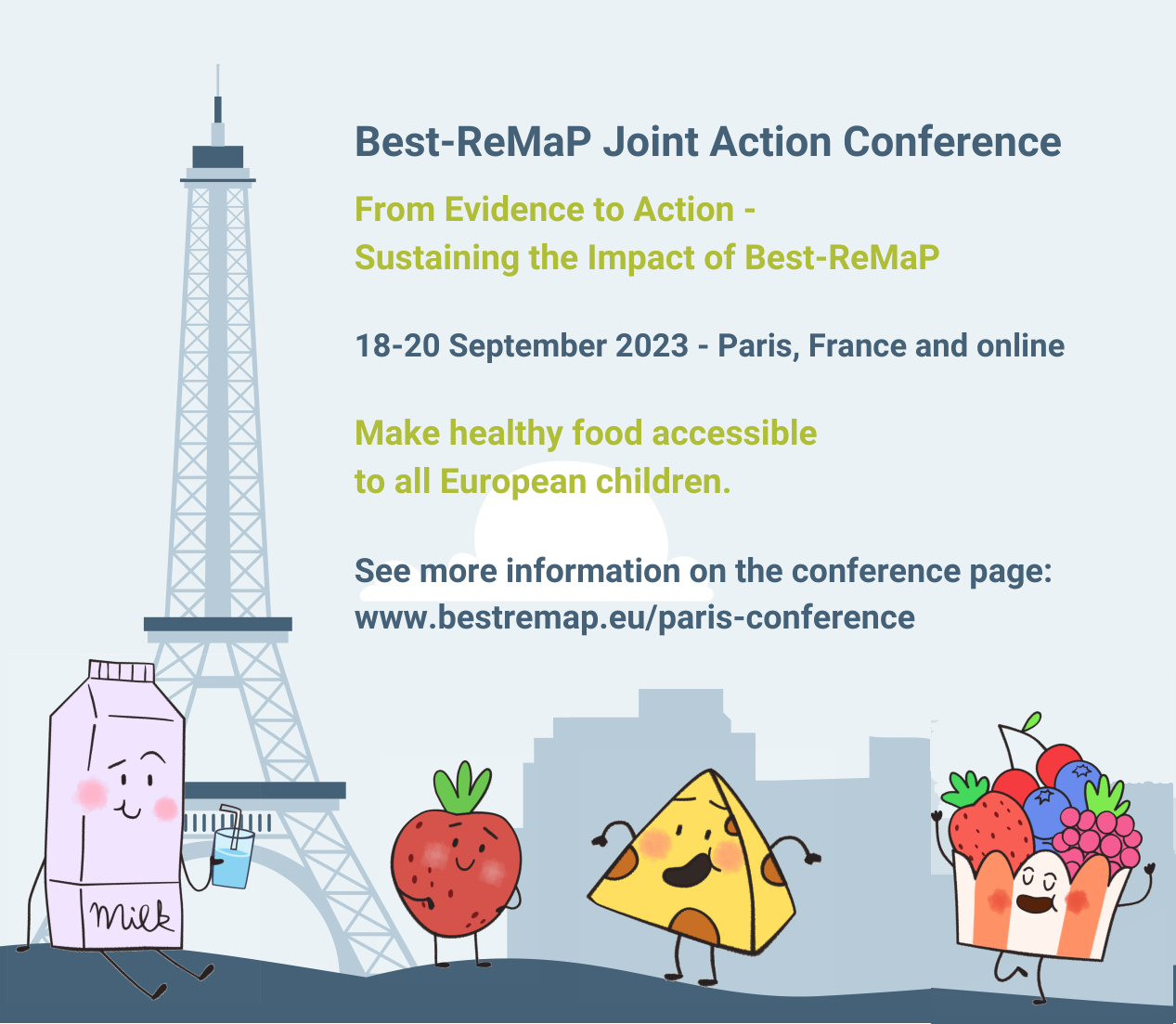Healthy Food for a Healthy Future
Best-ReMaP Joint Action of the European Union (2020-2023)
Good nutrition is at the heart of overcoming the challenges of childhood obesity. Experts of the Best-ReMaP Joint Action are working to contribute to the creation of an environment that ensures healthy food for children and adolescents through food reformulation, food marketing regulation, and public procurement of healthy food.
Best-ReMaP - a Europe-wide Joint Action (2020-2023)


Battling Childhood Obesity: Best-ReMaP's Path from Evidence to Action
In this image film, you’ll hear from project participants who are dedicated to the mission of combating childhood obesity in Europe. They share insights on the importance of reshaping the obesogenic environment, not just for today but for generations to come.
Discover the project’s remarkable results and learn about the ambitions to influence nutrition policy changes that will transform the health landscape. Dive into the experiences and challenges faced by member states as they navigated this vital journey. Join us on this inspiring path from evidence to action and witness the impact of collective efforts in the fight against childhood obesity.
After three successful years of operation, the Best-ReMaP project came to an end at the end of September 2023.
ESSENTIAL FACTS
20% – Percentage of overweight and obese children and adolescents in the European Union
61% & 75% – expected increase in obesity for boys and for girls by 2035
8.4% – Percentage of the health budget of OECD countries that will be spent to treat the consequences of being overweight over the next thirty years

MORE FACTS
3.3% – loss of GDP caused by treatment of obesity in OECD countries and 28 EU Member States
€5.6 – economic benefits returned for every €1 invested in tackling overweight
2.7 years – Average life expectancy reduction by overweight and its associated chronic diseases in OECD countries
Policies for better nutrition
ACTION NEEDED: The Best-ReMaP Joint Action, a project of the European Union is dedicated to promoting the well-being and health of children through an evidence based approach to addressing crucial issues in their food choices. Join us in our mission to prioritize the well-being of our future generation and pave the way for a healthier tomorrow.
CREATING HEALTHY ENVIRONMENTS: The environment in which children grow up greatly influences their dietary habits. At Best-ReMaP, we believe that by focusing on key policies areas and promoting an evidence based approach, we can create obesogenic-free environments that encourage healthier food choices for our children.
POLICIES WITH IMPACT: Developing and implementing policy proposals in three major nutrition areas can make a significant impact on shaping healthier food choices for children: 1) food reformulation activities 2) reducing harmful food marketing to children, and 3) quality based food public procurements.
EuroHealthNet’s policy recommendations
The EuroHealthNet Partnership strongly endorses the outcomes of the EU Joint Action Best-ReMap (2020-2023), which involved 24 EU Member States. Based on this and our other work, EuroHealthNet recommends building a new EU Action Plan. The plan should draw on the wealth of knowledge and evidence available across governance levels and sectors on how to reduce childhood obesity. This includes to:
- Reflect on what is needed for stronger EU action to reduce childhood obesity. The reflection process should include youth voices and look in particular at the commercial determinants of health and the availability of cheap, easily palatable and high-calorie foods.
- Advance healthy and sustainable food systems by addressing food production, distribution, consumption, and regulation of food marketing.
- Promote ‘healthy-weight environments’ that support healthy food options, active travel, and physical activity. Provide tools to local governments to establish such environments.
- Adopt a ‘whole-of-school’ approach that puts health and wellbeing at the centre of school policies. Encourage collaboration between the education and health sector, and others such as agriculture and urban planning.
- Mainstream health equity. This means that every initiative to reduce childhood obesity should also aim to reduce inequalities in obesity rates, which are higher in families with fewer resources.
Read our detailed recommendations here.

The content of this website represents the views of the author only and is his/her sole responsibility; it cannot be considered to reflect the views of the European Commission and/or the European Health and Digital Executive Agency (HaDEA) or any other body of the European Union. The European Commission and the Agency do not accept any responsibility for use that may be made of the information it contains.









